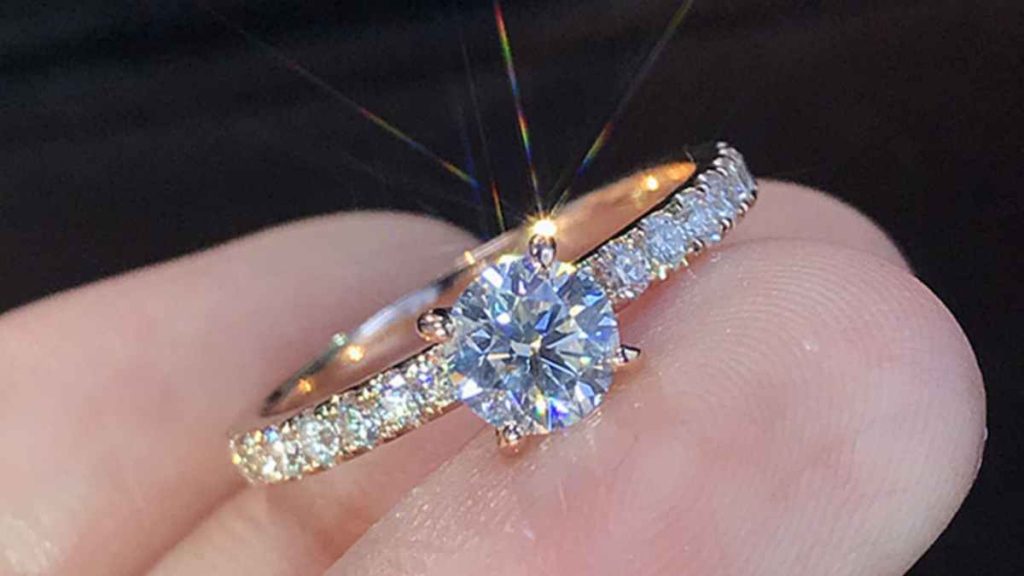Engagement rings are an important part of many cultures all over the world and have become a must-buy for young couples before marriage. The modern idea of an engagement ring is equivalent to a marriage proposal and a promise that young people will marry each. It is essentially an indication that the relationship has moved on to an entirely different level of seriousness. But what is the story behind engagement rings, who gifted the first one ever, and what is their history through time? Let’s find out.
Note that the engagement ring is an item that is largely associated with Western culture, and that is the main variant that we will be discussing here. However, there are many cultures and nations around the world that involve some sort of rings or symbols for their engagement customs.
The Concept of an Engagement Rings
If you think about it, the concept of an engagement ring is relatively straightforward and simple, and also quite logical. The ring is a powerful binding, it is almost a magical force that connects two hearts in an eternal love. The symbol of the ring is representative of endlessness, an infinity– as young love should be. Engagement rings are usually crafted from gold – the most iconic precious metal.
Ancient Egypt
Egyptians are believed to be the first to wear engagement rings, however, this information is not reliably backed by evidence. We now suppose that ancient Egyptians are the ones to establish the tradition of wedding rings, but we do not have much proof of them wearing engagement rings. Egyptians are also alleged to have started using the fourth finger as a finger for wedding rings, as it was believed that it was the “finger of love” that was directly connected to the heart. That is why we now call the fourth finger the “ring finger”.
Ancient Rome
The most convincing evidence of the usage of engagement rings points to Ancient Rome. The chosen future bride was given a gold ring which she wore in public. It is a little-known fact that the bride was given a second ring as well – one made of iron that she would use when she was home. This custom continued for centuries.
The Middle Ages
There are few records hinting at the usage of engagement rings between the Antiquity and the Middle Ages. The most notable of them is a letter by Pope Nicholas I in which he explains that an engagement ring is given by men to their chosen bride in order to signify their intention of marriage.
The First Diamond Engagement Ring
1477 is considered to be the first time a diamond was used on an engagement ring. It was used by the Austrian Archduke Maximillian who gifted a ring with a diamond for his future bride-to- be, Mary of Burgundy. His idea proved extremely popular among European nobles and started something that would then be considered a trend for the nobility, but turned into a tradition that would last for centuries.
It should be pointed out that Maximillian is considered the pioneer of the diamond ring, but is not the one who made it the popular public trend that it is now – that came much later, namely in the 20th century. The Victorian-era British further popularised the usage of diamonds on engagement rings but they went a step further by combining them with other gemstones, and these engagement rings were often shaped as flowers.
The Age of Enlightenment
During the Age of Enlightenment in Europe, silver posy rings became popular engagement ring options, containing intricate messages that lovers exchanged. During the marriage ceremony, the silver posy rings would be substituted for gold ones.
The 20th Century
A popular story related to diamonds being used on engagement rings is the 1947 slogan “A Diamond is Forever”. This slogan would stick in the public mind and popularise diamonds to an almost absurd level.
It was a very logical slogan – diamonds are the hardest and most durable mineral; that is why they are the perfect gift for a future bride, they would signify a durable and eternal marriage.
Additionally, diamonds are symbols of purity and beauty, as any happy marriage should be.
The marketing campaign in America showing movie stars wearing diamond rings skyrocketed the sales of diamonds and cemented their position as a go-to engagement ring complementation.
Modern Times
Engagement rings are here to stay. What is changing though is the usage of diamonds for engagement rings – more and more people are stepping away from diamonds and going for more ethical and cheaper options.
These options include lab grown diamonds – a more sustainable and much cheaper option than mined diamonds that does not harm the environment on the scale that mining does. Another popular modern option is moissanite – a mineral that originated in space with very similar characteristics to that of the diamond. Ruby, quartz, emeralds and other types of precious stones have appeared on engagement rings ready to challenge the established traditions in the engagement custom.
Engagement Rings in Different Cultures
It is widely known that engagement rings are largely a European custom, but in modern times they have spread all over the world.
In China, for example, engagement rings became a trend only recently, with the man expected to buy a large diamond engagement ring for his bride-to-be. Rings were popular during the middle ages in China, but they were in no way associated with engagements.
The Japanese use engagement rings, but they have largely stepped away from diamond rings, and in India, everything depends on the religion of the couple.
In Russia, engagement rings largely follow the Western tradition.
Another interesting example is Ireland with its Claddagh ring which symbolises not only the intent of marriage but also a sign of friendship.
In Nordic cultures, the engagement ring is not female-only – both partners wear one which makes the choice of specialised engagement rings a very interesting experience.

